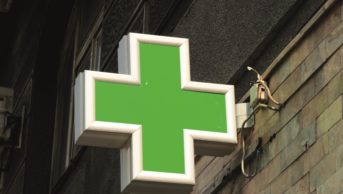‘Emergency preparedness, resilience and response’ (EPRR) is a programme of work that focuses on planning for and responding to a wide range of incidents and emergencies that could affect health or patient care. It is a new, novel and exciting prospect in pharmacy and, although it may be atypical for pharmacists to be exposed to EPRR, I think pharmacists have a unique set of skills, such as risk mitigation, which make them well suited to EPRR management roles.
Although four years have passed since the COVID-19 pandemic, it revealed several vulnerabilities and led to the recruitment of a dedicated pharmacy emergency planning team.
One of the interesting aspects to note — which is unique to EPRR — is that there is an inverse relationship between our input (i.e. planning) and the output (or impact of the incident), meaning that the more meticulous the planning element is, the lower the impact of the ‘incident’.
While this is what we want, meaning an incident that has led to low impact at a patient level, it disguises the ‘work behind the scenes’ and can be challenging for others to recognise our work.
A day in the life of an EPRR pharmacist when our electronic health record system malfunctioned
8:30: Before officially starting work, I check social media for an update on what is occurring or what we may need to be mindful of.
9:00–9:20: I attend the daily site meeting via Microsoft Teams. This is a meeting where representatives from each care group attend and provide updates to the site team on anything that is likely to impact patient flow or service continuity.
It was on this call where ICT colleagues announced that ‘Epic’, our electronic health record system, was experiencing an unplanned downtime, which meant I needed to pinpoint how this affected our services and consider the overall risk.
9:20–9:30: I inform the pharmacy site lead and send an email to all staff outlining the issue and provide any information I have at this stage.
9:30–10:30: I refer to our pharmacy department’s business continuity plan for unplanned Epic downtime.
11:00–15:00: Meetings
I coordinate meetings with the leads of every area via telephone and provide them with their section of the continuity plan, which will outline the manual processes they will need to follow in this scenario, to ensure we can still provide medicines to patients.
In this case, I advised the following:
- Procurement and distribution — order medicines manually;
- Clinical pharmacists — use existing paper discharges to allow patients to be discharged if safely possible and maintain patient flow in and out of the hospital;
- Dispensary — revert to standalone process for dispensing;
- Aseptics and clinical trials — revert to standalone process.
15:00–17:00: Once individual areas have understood their downtime processes, I provide support to the dispensary and request that staff also help to work through urgent orders to minimise patient impact.
17:30: I complete an ‘After action review’, which is crucial as per NHS England guidance. I prefer to do this the same day or the next working day to ensure I capture all of the things that went well from a departmental standpoint and areas we need to improve on. I also circulate this to colleagues who have been involved.
Final points
EPRR is an excellent area to get exposure to and you could do so by asking your line manager if you could write a business continuity plan for a specific area of pharmacy and implementing a plan to test it. Alternatively, you could ask to shadow your trust EPRR leads for half a day to see if you would like it.
The best part about EPRR is that you are exposed to a range of different projects, both regional and national, and are also responsible for managing incidents at a departmental level — no two days are identical.
For more information, visit the NHS Emergency Preparedness, Resilience and Response page for further information.
Zena Uppal, principal pharmacist — emergency planning and business development, King’s College Hospital NHS Foundation Trust


